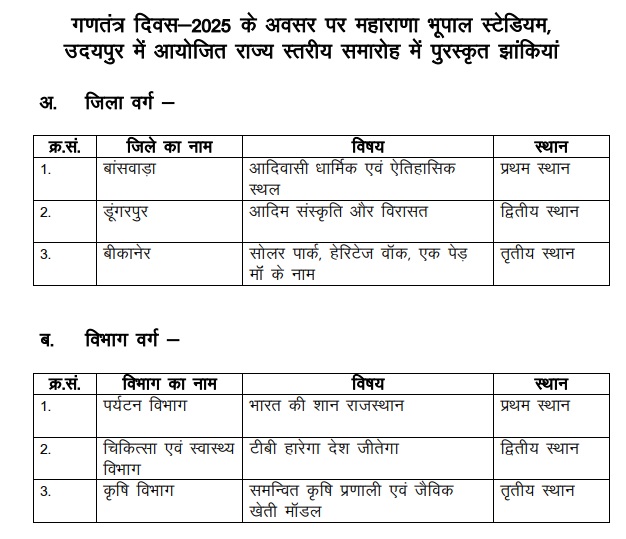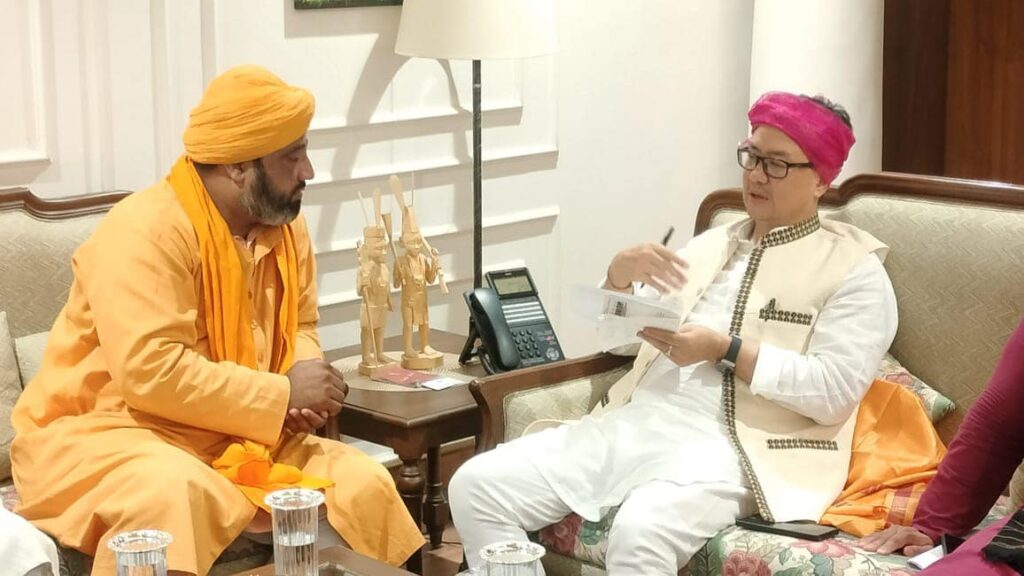Fort is built on a quadrilateral i.e. Bhatner fort on one corner, Bhatinda on second, Hisar on the third corner, and Sirsa fort on the fourth corner. The place between these four forts was called Trine where there is also the Talwara lake. When the army came to this area, the forces surrounded it
with four nails.
Hanumangarh, located in the northeast of the State of Rajasthan, on the banks of the river Ghaggar, was built by Bhupat, son of King Bhati of Jaisalmer in 253 AD. As per ancient records, Bhupat had lost the battle against the Sultan of Ghazni, and therefore took refuge in the forest close to the Ghagger river. While there, he built this fort, which is considered to be the oldest fort in Central Asia and an invincible one at that. The fort was initially called Bharatner, after the name of Bharata, the brother of King Rama of Ayodhya, but over a period of time, it came to be called Bhatner. In the year 1805 AD, Maharaja Surat Singh, the ruler of Bikaner captured the fort. The day of victory was a Tuesday, a day of Hindu God, Hanuman. A great devotee of Hanuman himself, he changed its name to Hanumangarh.
RTGD Team
Apart from Bharatner and Bhatner, Hanumangarh was also called Sardulgarh, Tavarhind and Saraswatnagar.
Hanumangarh is a huge fort built in the Vedic and the Mahabharata period and is situated just 700 meters away from the railway station. Many foreign rulers including Babur, Ahmad Shah, ruler of the Lodi dynasty, Akbar, Timur attacked this fort. It is also heard that Alexander the Great had planned an attack on this fort but he stopped on the banks of river Sutlej.
The huge door at the entrance of the fort and the nails on it, gave protection against unauthorized entry inside the fort. These nails have been so strong that no one could penetrate them or break them to enter inside.
The fort, spread over 52 bighas (1 bigha is equal to 1,618.7 square meters), is surrounded by the Saraswati river, which we today call the Ghaggar river. Each bastion of 52 bighas had a well that supplied water to the population living inside. This fort is a perfect example of communal harmony, as there are shrines of every religion built inside. Many rulers ruled here and every ruler built temples of their Kuldevi including the Jain temple, Shivaji’s temple, Thakurji’s temple, Sukhasinh Mehtab Singh Gurdwara and Mama Bhanja’s dargah.
According to history, the rulers of Uzbek (present-day Uzbekistan) attacked this fort when a prince of Hisar liked a princess of Uzbek and brought her away. He passed through this fort via Lahore and Ghazni. He lied to the Uzbek army by saying that he was the prince of Bhatner, which made the Uzbeks angry and they attacked the fort following which all the civilians and the army living inside the fort were killed. This prompted the rulers to perform Saka (walk to their death), while the queens practiced self-immolation called Jauhar.
Following the battle with the Uzbek army, the bodies of all the killed were thrown into the wells and bastions inside the fort. Even today, if a well is excavated, skeletons of dead bodies are found there. The Department of Archaeology tried it several times, but each time the excavation had to be stopped due to more and more bodies being found.
Just inside the first main gate of the fort, is the Hanuman temple, followed by the second gate which was built by King Bhupsingh. This gate has withstood the attacks of foreign rulers from Humayun to Akbar.
According to historians, this fort is built on a quadrilateral i.e. Bhatner fort on one corner, Bhatinda fort on the other, Hisar on the third corner, and Sirsa fort on the fourth corner. The place between these four forts was called Trine where there is also Talwara lake. When the army came to this area, the forces surrounded it with four nails. It is said that the war between Prithviraj Chauhan and Mohammad Ghori was also fought at Trahan. Tunnels were built connecting these four forts, which helped the army to move from one fort to another in case of attack and also used to surround the enemies.
This has been proved by research conducted by Professor Kathari, Chairman of the History Department of Kota University and it has been approved by the International Council for History.
This fort comes under the national heritage, but due to the indifference of the central government, it has drifted into oblivion. Despite the fact that this fort is rich with grand palaces built inside, residents and historians believe that the government has not paid enough attention to the maintenance and repair of this monument.
Nonetheless, the research institutions from different countries including Italy and Germany have conducted several excavations; the materials found have been kept in the National Museum, Delhi, and Bikaner Museum.
History has it that Razia Begum, the Sultan of Delhi was imprisoned in this fort, and so also Aurangzeb’s brother. So one can fathom what the importance of this fort must have been at that time.
Sadly, despite its rich history, the fort lay neglected today. The plight of this fort can be gauged from the fact that Rajasthan or the archaeological institutions of the country are not doing anything to restore this citadel to its former glory.
The government and public representatives should show their sensitivity and give more attention and budget to this fort so that it can be preserved for future generations as well.
Compilation: YouTube, Wikipedia, and Google







